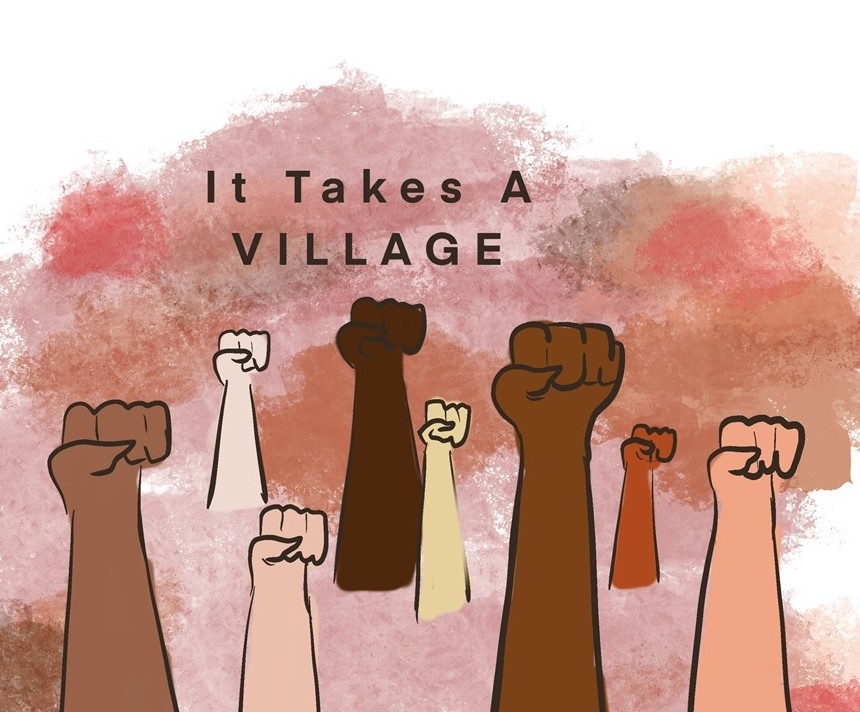CSUDH carries on its initiative to highlight the issues of race on and off-campus. Courtesy photo.
By Robert Rios, Campus Editor
With the fight for social justice continuing, students and faculty came together to speak on the issues that continue to plague them.
In another “It Takes a Village” event, in conjunction with the California State University Academic Senate, nearly 200 people attended the Zoom webinar focused on hearing what students and staff had to say in regards to social justice.
“It was really important that we create dialogue and we continue the dialogue and we also take actions towards our advocacy,” Academic Senator and creator of “It Takes A Village,” Monique Turner said. “I think students have the power in doing that.”
This second event had a mixture of panelists of students and faculty: Senate Chair Lara Talamente, Catherine Jermany, program director of the Rose Black Resource Center, Dr. Anthony Samad, Executive Director of the Dymally Institute and ASI President Rihab Shuaib.
Some students who participated in the “It Takes A Village” in September were also asked to join the panel to moderate and voice their opinions once again. Yet, they were also there to listen.
Student moderator Ronald Jackson, a human services major, had spoken at the prior “It Takes A Village” webinar and talked about how he has spent his time more as a listener.
“What I’ve been doing is, having experienced problems in the vain, I hadn’t given much thought to what others thought because I was busy dealing with the situation,” Jackson said.
“As other cultures began to awaken to it, I started to really think about not so much what am I doing, but what is actually going on. Some of the actions I have taken personally is being more a part of dialogue, being more of a listener, and understanding what other people’s take is. I have to live on this plant as a Black man, so I still have to go through this maze that everybody now is discovering that exists.”
Although there are not many students on campus right now, ASI President Shuaib feels the student government still needs to hear what students have to say in order to help them on and off school grounds.
“Being someone who is in our student government I think it’s really important that we are able to listen to the concerns of all students and really try to create the changes they want to see,” Shuaib said. “A lot of the time students just want to be heard about some of the issues they are going through. Even though that is such a great tool and a great thing we can do, it is also important that we put action towards what’s going on. We can’t just listen and put any actions behind it.”
In the part to help the school with the issues of race, one of the topics that were discussed is what CSUDH is doing to assist students and staff.
Dr. Anthony Samad, Executive Director of the Dymally Institute and co-chair of President Thomas A. Parham’s Task Force on Racial Reconciliation explained what problems the task force has encountered within the Black community on campus. He pointed out that there has been a decline in Black faculty and how that has affected the school.
Since the last “It Takes A Village,” the task force has created a subcommittee on staff issues and analyze why Black faculty have concerns as it relates to the lack of support they receive in terms of providing help to all students.
“If we help Black students we’ll be helping all students,” Samad said.
According to Samad at the panel, when the task force work is finished they will provide suggestions to the president of the cabinet on how to address the fixes.
In the last Institutional Information document provided in 2018, it said that the university was serving 13.4% Black/African American students.
Attendees were also allowed to speak and answer any of the questions in connection to how do they feel about speaking about race, what micro-aggressions have they dealt with and if they have been racially profiled off or on campus.
A third “It Takes A Village” event will be held in the first week of December. If people would like to view the webinar, they may be able to see it on the csuDHTV Youtube channel.

